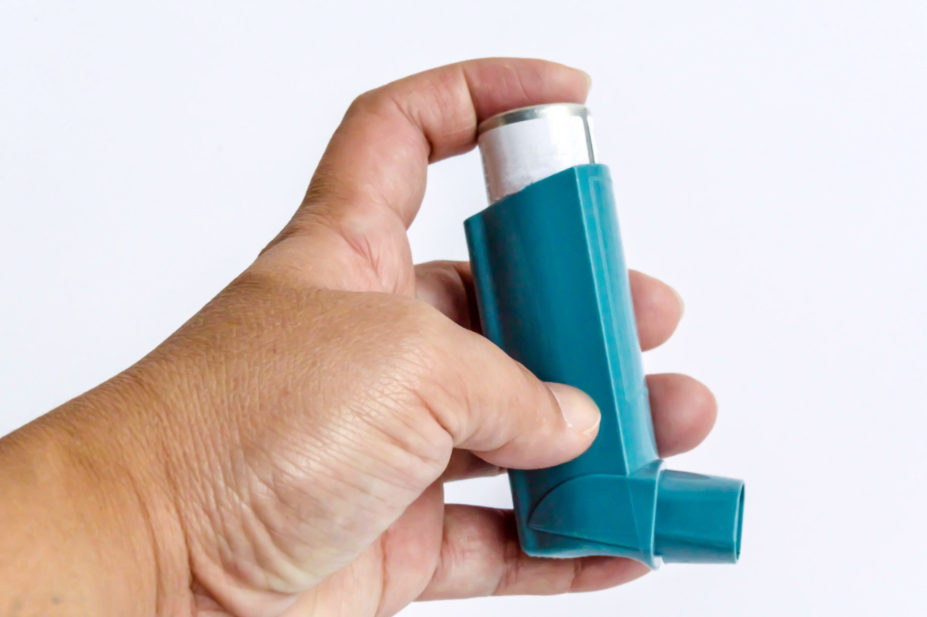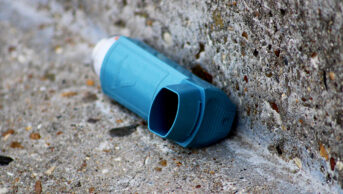
Shutterstock.com
Primary care networks (PCNs) will be rewarded for increased prescribing of dry powder inhalers (DPIs) and soft mist inhalers (SMIs) from October 2021, in an effort to reduce inhaler carbon emissions across the NHS.
Increased prescribing of salbutamol metered dose inhalers (MDIs) with lower carbon intensity propellant will also be rewarded as part of a suite of incentivised targets for PCNs in 2021/2022 and 2022/2023.
‘PCNs — plans for 2021/2022 and 2022/2023’, published by NHS England and NHS Improvement (NHSE&I) on 24 August 2021, describes salbutamol MDIs as the “single biggest source of carbon emissions from NHS medicines prescribing”.
By rewarding PCNs for switching patients to salbutamol MDIs with lower carbon intensity propellant, NHSE&I said its “ambition is to reduce the mean propellant (F-gas) carbon intensity of salbutamol inhalers prescribed in England to 11.1kg by 2023/24”.
The document adds that from October 2021, PCNs will be rewarded for “increased prescribing of DPIs and SMIs where clinically appropriate”.
“Our aim is that, in line with best practice in other European countries, by 2023/24 only 25% of non-salbutamol inhalers prescribed will be MDIs,” it adds.
PCNs will be able to claim up to £12.2m in 2021/2022 and up to £16m in 2022/2023 from the Investment and Impact Fund (IIF) — which is used to support PCNs in delivering high-quality care to their patients — for meeting the targets.
In addition to the incentives introduced in October 2021, from 2022/2023, the IIF will reward PCNs for increasing the percentage of asthma patients who are regularly prescribed an inhaled corticosteroid (ICS), where clinically indicated.
As well as improving patient health, the planning document says this incentive is expected to reduce unnecessary short acting beta-2 agonist (SABA) prescribing — and therefore carbon emissions — by improving disease control.
A further incentive will directly reward PCNs for achieving these reductions in avoidable SABA prescribing.
Research published in February 2021 found that SABA use and the amount of greenhouse gases emitted by the inhalers are approximately three times higher in the UK than in other European countries.
“Our aim is that, by 2024/2025, 90% of patients on the asthma register will be regularly prescribed an ICS, while only 10% will be prescribed six or more SABA inhalers per year (a marker of poor disease control),” the document says.
It adds that pharmacies participating in the Pharmacy Quality Scheme (PQS) had been “proactively identifying and referring” asthma patients with markers of poor disease control.
From September 2021, community pharmacies in England will also be tasked with carrying out asthma inhaler technique checks to claim a share of funding from the PQS, worth £75m in total.
Harriet Edwards, head of policy and external affairs at Asthma UK and the British Lung Foundation, said that making the switch to prescribing lower carbon inhalers is something that the two organisations “fully” support.
But she said that while it was important the NHS “do their bit” to protect the environment, it should not be at the expense of people’s health.
“People with asthma should have inhalers that are most suited to them and that will help protect them from a life-threatening asthma attack,” she said.
Edwards said that the NHS now needed to develop “quality guidance” so GPs could support their patients to make the switch safely.
In addition to strategies to reduce inhaler carbon emissions, the PCN plans also cover other areas, including cardiovascular disease prevention and diagnosis.
From 1 October 2021, PCNs must improve diagnosis of patients with hypertension and work proactively with community pharmacies to improve access to blood pressure checks, in line with the NHS community pharmacy hypertension case-finding service.
The documents also highlight plans to introduce a series of new medicines safety indicators from 2022/2023 to “directly incentivise” good prescribing practice for patients prescribed drug combinations that are known to have increased risk of associated harm.
Box: a net zero NHS
In the report, ‘Delivering a ‘net zero’ National Health Service‘, published in October 2020, NHS England and NHS Improvement laid out ambitions to become the world’s first “net zero” national health service.
The report set out aims to reduce the NHS’s carbon footprint to net zero by 2040, with an 80% reduction by 2028–2032.
It highlighted that medicines accounted for 25% of emissions within the NHS and a small number of medicines account for a large portion of the emissions; anaesthetic gases account for 2% of emissions and inhalers account for 3% of emissions.


